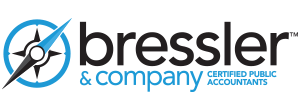Understanding the State Healthcare Exchanges
The state healthcare exchanges are supposed to be rolled out on October 1st, and 50 million people have been encouraged to go there to obtain coverage. There are many questions about the health care exchanges: What will they look like, how will they operate, and is there a benefit in going to the exchange for health insurance?
While there are some states that are still deciding, the deadline of October 1 to have their exchanges active is rapidly approaching.
What is an exchange? Who are they targeted to? An exchange is a marketplace you will be able to go to online to shop for and purchase health insurance plans. The exchanges will be available to both small business owners and individuals. Any individual / business owner will have the opportunity to choose to either buy from the exchange in their state (whether it is a state or federal exchange) or to continue to buy health insurance from a private health insurance carrier. You may access the exchanges through navigators, government websites, or independent brokers. Many brokers are appointed on the exchange and with private markets. This will help line up the coverage options and differences between the exchanges options, and what is available in the private market.
What exactly does the exchange offer? – The exchanges will offer health insurance plans in 4 tiers (Bronze, Silver, Gold, and Platinum). The object of the exchanges is to offer health insurance plans that are easily comparable in terms of coverage, services and price.
What is not included? — Ancillary lines of coverages are not included. Many people are used to having the option to buy dental, vision, life and disability coverages with their health insurance. These coverages will not be available through the exchange.
Do exchanges help address the cost of health insurance? — Exchanges will offer tax credits to individuals and small businesses to purchase health insurance, but they do not help to fundamentally lower the cost of health insurance today. All available tax credits do lower the amount of money that an individual or small business owner may pay for health insurance, but premiums are still expected to increase at a rate of at least 20% for small business and may exceed 100% for individuals.
Is there a benefit to the exchange plan? — If you are unable to afford coverage in the private market then the exchange options are a great value. They will provide individuals who would otherwise not be able to buy with the opportunity to purchase some form of health insurance coverage.
Do you have to purchase insurance through the exchanges? — No, health care exchanges are being created as another avenue to purchase health insurance, and will not be the only way to purchase health insurance. The private market place will still be available to all consumers and will offer qualified health plans to make sure you are in compliance with reform legislation.
How do the subsidies work? — If your income is below a certain level (depending on your dependents, etc.), then the federal government will give you a tax break / subsidy to purchase health insurance. As a consumer, you can choose one of two ways to accept your tax credits: 1) You can accept an estimated credit that will lower your health insurance premiums by a set amount each month. 2) Or, the actual amount of the credit will be settled out when your taxes are filed. You would pay the monthly premium in full, and then deduct the amount of the coverage from your year end tax return.
Given this information, many are trying to decide whether or not the exchanges are the right option for them. The exchanges are another avenue to price out coverage; however, there are a number of important points to consider why they may not be right for you:
- Experience – The exchanges are brand new and do not have the management experience that the private health insurance carriers do. Individuals do not yet know how to navigate them, what the customer service experiences will be like, and how their renewals will be serviced. All of these are vital to policy holders in terms of offering coverage and managing cost.
- Loss History – Being that there is no loss history, there is no indication as to what future pricing may look like. Most carriers are able to forecast pricing and change plans based on previous history. Without this information, it is difficult to say what pricing will look like in future years.
- Ancillary Services – Most small group carriers offer dental, vision, disability and life insurance in addition to medical coverage. These are popular affordable coverages that many business owners offer to their staff in one complete affordable package, but would be unable to do so through the exchange.
- Broker Relationship – Many small business owners value the relationship with their broker or business services providers. While select brokers will be able to access state exchanges, small business owners still need a trusted advisor to break down the differences between plans offered on the exchanges and their private market plans to see what is the best option for the business owner.
- Multi State Plan Implementation – Any small business owner that has a multi-state health insurance plan knows that obtaining coverage for employees and sub contractor’s in multiple states can be complicated. Keeping in mind participation requirements, carrier networks, and the ability for carriers to write in the required states, there is a lot of confusion as to how exchanges will be able to write plans for small groups with multi-state businesses.
Department of Labor Information on the Affordable Care Act (Obama Care) is located: www.dol.gov/ebsa/healthreform/
The Federal website for states not running their own exchange is located: www.healthcare.gov
The State of California Exchange is located: www.CoveredCalifornia.com
If you have any questions about the new health care exchanges, give us a call at 559-924-1225, and we will do our best to locate the answers.
Much of the information in this blog was taken from a Forbes.com articles —5 Points to Know About Health Care Exchanges and What They are Missing





